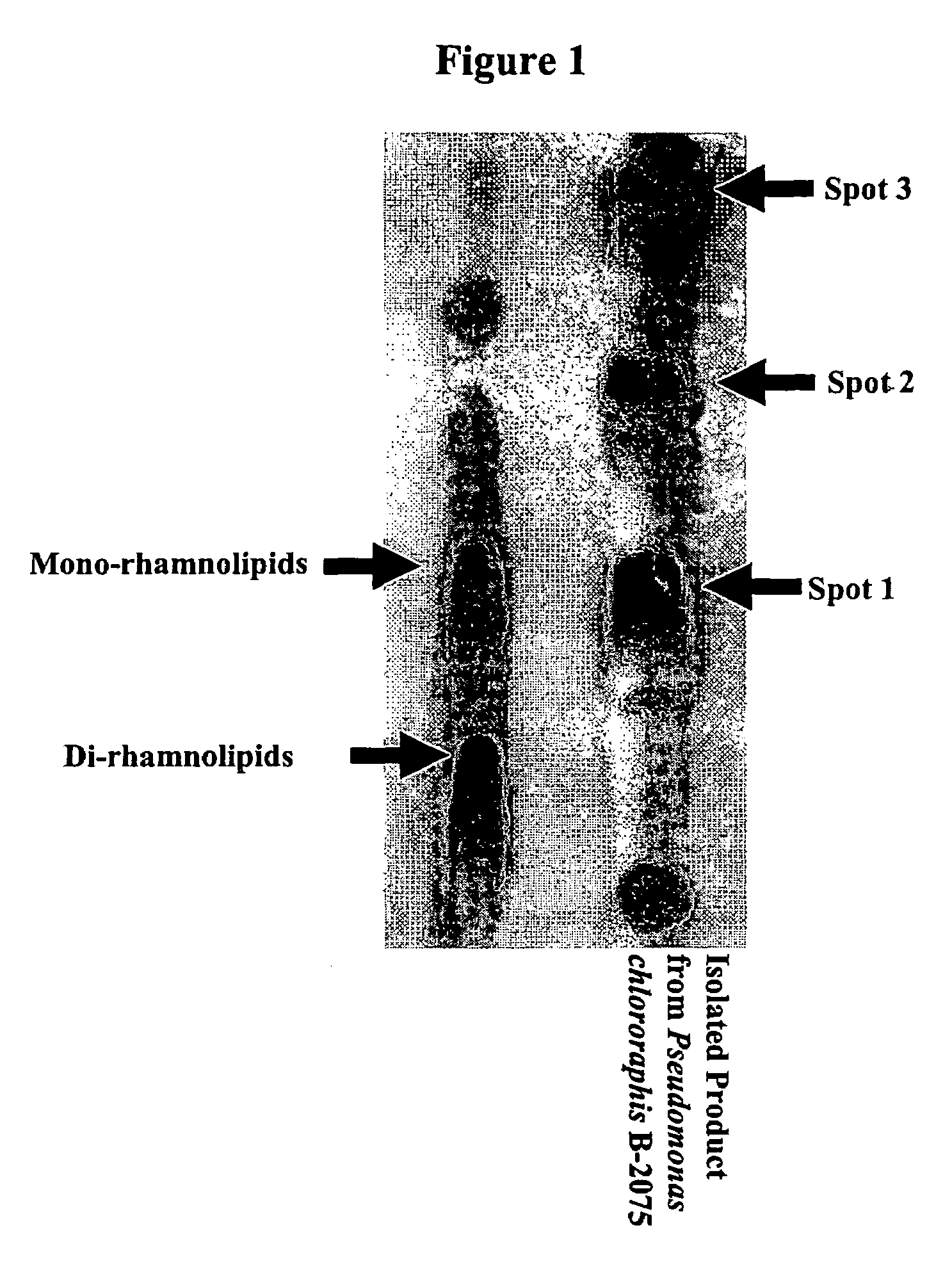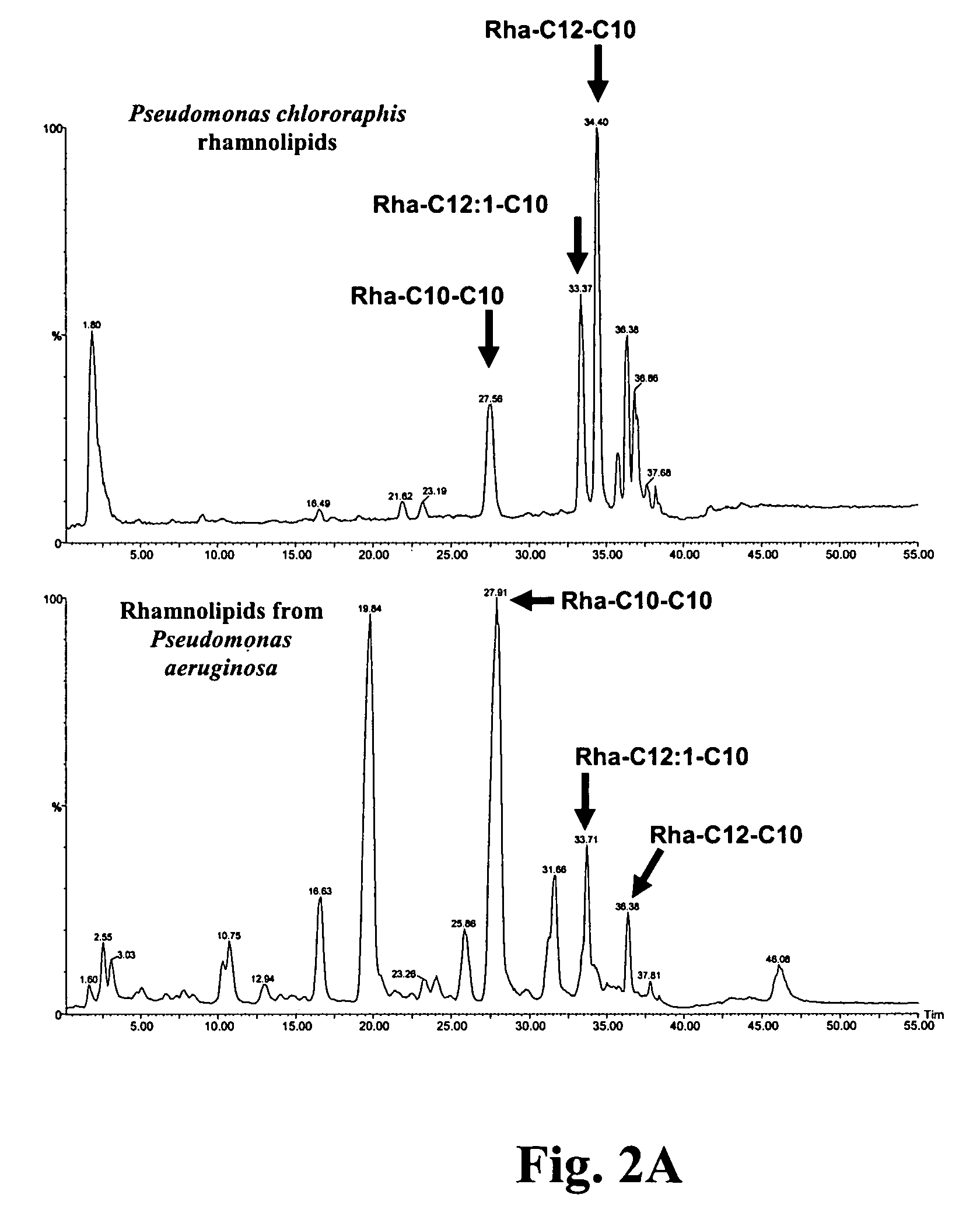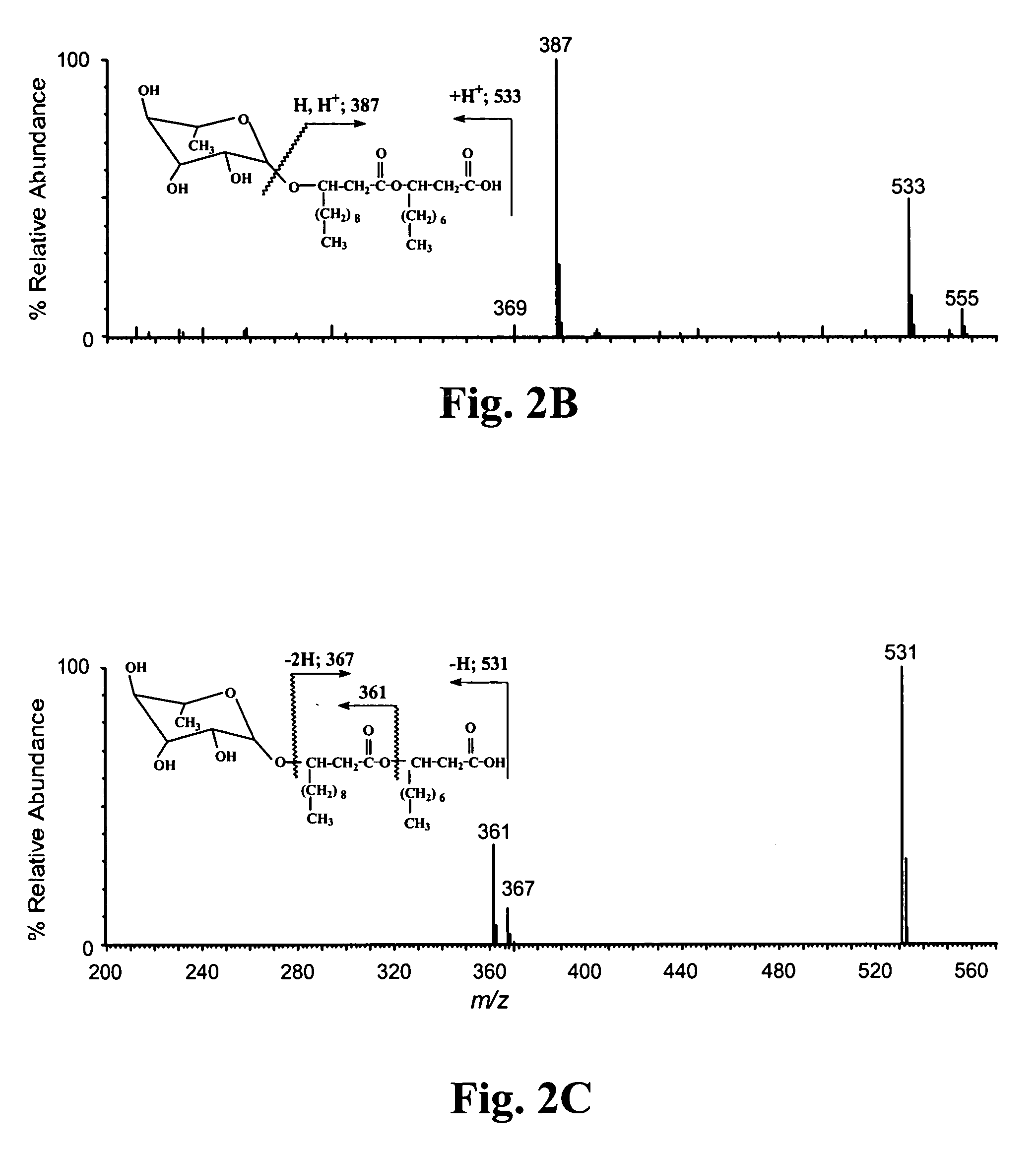Processes for the production of rhamnolipids
a technology of rhamnolipids and lipids, which is applied in the field of rhamnolipids production processes, can solve problems such as significant safety problems
- Summary
- Abstract
- Description
- Claims
- Application Information
AI Technical Summary
Problems solved by technology
Method used
Image
Examples
examples
[0015]Microorganisms: Pseudomonas aeruginosa strains PG201 and its isogenic mutant PG201-RhlA::Tn5 were used as control strains: strain PG201 served as a strain capable of rhamnolipid production and PG201-RhlA::Tn5 served as a strain incapable of rhamnolipid production (Ochsner, U. A., et al., J. Biol. Chem., 269: 19787–95 (1994)). P. chlororaphis strain NRRL B-30761 was first identified by Stanier et. al. (Stanier, R. Y., et al., J. Gen. Microbiol., 43: 159–271 (1966)) as P. chlororaphis NRRL B-2075 (ATCC 17813); it has been shown through our research to be capable of producing rhamnolipids under specific growth conditions; NRRL B-30761 is identical to NRRL B-2075 (ATCC 17813). A variety of other bacteria belonging to the genus Pseudomonas as well as other bacteria outside of that genus were also assayed in regards to the ability to produce rhamnolipids.
[0016]Media: Both Kay's minimal media (0.3% NH4H2PO4, 0.2% K2HPO4, 0.2% glucose, 0.5 mg / L FeSO4, 0.1% MgSO4) and a mineral salts m...
PUM
 Login to View More
Login to View More Abstract
Description
Claims
Application Information
 Login to View More
Login to View More - R&D
- Intellectual Property
- Life Sciences
- Materials
- Tech Scout
- Unparalleled Data Quality
- Higher Quality Content
- 60% Fewer Hallucinations
Browse by: Latest US Patents, China's latest patents, Technical Efficacy Thesaurus, Application Domain, Technology Topic, Popular Technical Reports.
© 2025 PatSnap. All rights reserved.Legal|Privacy policy|Modern Slavery Act Transparency Statement|Sitemap|About US| Contact US: help@patsnap.com



